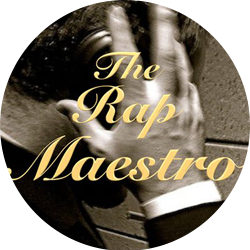She’s been at #1 on the Billboard charts for dozens of weeks.
Multiple readers have requested my thoughts on her.
Shit, even my publisher sent me an email just to specifically request a whole damn CHAPTER on her!
So, while I’m still listening to the same Dr. Dre & Lil Wayne tracks from the 1999, the storm has kinda reached a point where me ignoring it would just be irresponsible…negligent…and, really, plain sloppy, if I’m honest.
So–who is Cardi B?!
Well, let’s do Bodak Yellow out of the way, since you already know it. Really, what this song does is prove just how closely trap music intertwines a rapper’s flow and the beat behind them, and that this is the reason so many people love Future, Young Thug, Gucci Mane, etc. Cardi B’s rhythms from one bar to the next on this song really don’t change that much, just like how I explain in this Missy Elliott analysis here. This means that her voice becomes another instrument that’s part of the beat, like a snare or bass kick. Trap music is all about atmosphere and environment in this way.
This is part of what makes “Bodak Yellow” so addictive: that it has located a recipe that works beautifully, and basically just re-works it over and over and over until your ear gets completely lost in it in a super cool way. While this song technically lasts for a length of 100 measures or so, really, it’s just one measure that gets repeated 100 times–and that’s what makes it so catchy, and so enjoyable. I talk a little bit about this obsessive aspect of trap music in the Vox video I just released last week here. Basically, where older Hip Hop was based on being really hype and dramatic (think 50 Cent’s “Get Rich Or Die Tryin’”,) trap music is much more focused on looking cool without trying too hard.
We can see this in how Cardi’s flow doesn’t do too much. Her flow almost never changes from this basic outline:
“Said little bitch, couldn’t fuck with me even if you wanted to.”
The rhythms on “wanted to”–DUH duh DUH–are repeated tons of times throughout song: “OUT and SEE”…“TIRED of me”… “HONestLY”…“FRONT of ME”…“HARD as ME”…“BOTHer ME”…“TRYna BE.”
There really isn’t a separate chorus and separate verse on this song, because her words in one section are so closely similar to her words and flow in the other section.
She does throw in triplets from time to time on “Bodak Yellow,” like aroiund 1:22, but as I explain in the Vox video, triplets are now so prevalent everywhere that we don’t even really hear them as standing out big. They’re so removed from existing in any one specific place or in any one specific rapper–unlike something such as Talib Kweli’s crazy flows on “RE: DEFinition”–that they’re more of a code, or a handshake, that any rapper can use to tell their listeners, “Yes, I’m part of Atlanta trap music.” It’s like the 12-bar blues in jazz: everyone knows it, and no one “owns it,” and this is a huge part of what makes the culture so vibrant. Because Cardi is using really only two rhythms here–triplets and the DUH duh DUH ones–her song is folded back on itself in a really topsy-turvy way, sort of like this MC Escher painting here. Future is really great at this too, especially his song “Lay Up,” or “Ain’t Chu.” There, we feel the sam effect: Future ends almost every line with the words “when we lay up,” or “ain’t chu,” and so we end up hearing 1 measure over and over and over. Rather than being a reason why trap music sucks, it’s the exact reason for why trap music is amazing.
But Cardi is far from a one-trick emcee. Take her song “Lick,” for example, which you can hear on YouTube here. First, “Lick” is impressive just because of the simple fact that she can rap over it AT ALL. The song is incredibly slow, with a BPM of 58. (BPM, for those who don’t know, stands for “Beats Per Minute,” and basically just measures how fast a song goes, like miles-per-hour measures how fast a car goes. The higher the BPM number, the faster a song; the lower a BPM’s number, the slower a song.) This makes “Lick” the slowest song I can think of, because the oldest used to be The Roots’ song “BOOM!,” at BPM = 60. (while the fastest is Macklemore’s “Can’t Hold Us,” at BPM = 140.)
The last tile in this rap mosaic is Cardi’s ability to kill it in the safety-net-free cipher freestyle. That would be her song “Red Barz,” where a lot more of the action is about her pun and joking abilities. You can check it out here. Her best lines are these:
You a real nigga mad at a bitch for getting bread? /
You’s a bitch from birth, you just grew a third leg, woo! /
Bite down, bite down, it was crunch time /
Yeah I skip all of them bitches in the lunch line /
Like Kendrick might say…DAMN.
We’ve put together a convincing picture of a complete rapper: catchy, percussive, unique, and stacked with bars. So please feel comfortable taking the under on the bets on Cardi B next time, because this really won’t be an underdog story for too much longer.

